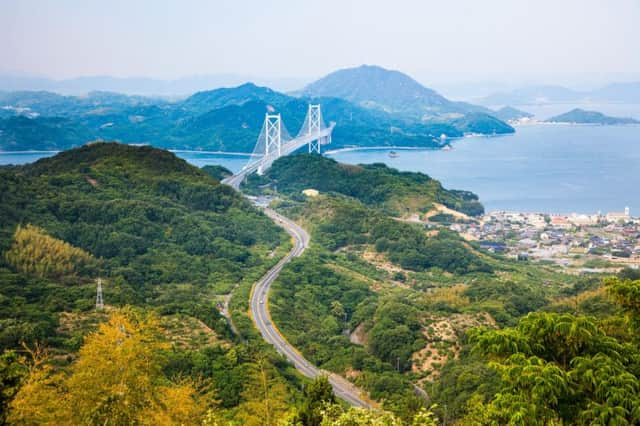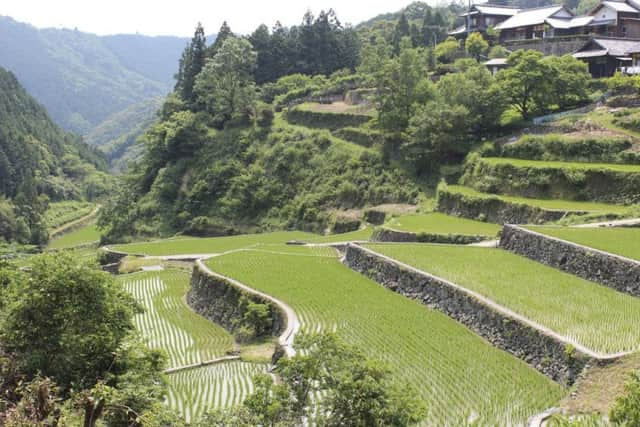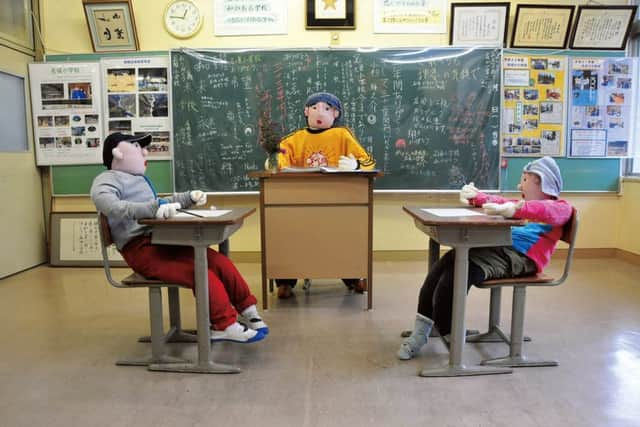Travel: Dive feet-first into rural Japan's Shikoku


Had I been offered the choice of going to a yuzu farm and processing plant, a village populated with scarecrows or indeed a towel museum anywhere else in the world, I may have declined, but in rural Japan these truly added up to the trip of a lifetime.
Shikoku is the smallest of Japan’s four large islands. A short connecting flight from Tokyo takes you to the small city of Kochi – famed for its delicious seared tuna – where we met our charming translator, Kazuyo, who was to accompany us. Pausing only for some tuna and smoked aubergine ice cream, we headed out.
Advertisement
Hide AdBeyond the city, Shikoku is mountainous and sparsely populated. Yuzu, a fragrant cross between a grapefruit and a mandarin, is the major crop around here, with the first village we visited, Umaji, producing a major part of Japan’s crop.


The steep valleys are covered in yuzu trees, their mist-obscured tops giving only occasional glimpses of their heights. The serpentine mountain roads are dotted with half-size farm trucks, taking the harvest down to the cooperative. Here you can watch while fruit is fed into a vast machine to be squashed and sample the myriad products, from juice – now available in the UK and marketed as a superfood – to cocktails, chilli sauce and cosmetics that are made at the other end. In Japan yuzu juice is not promoted as healthy, but is said to engender “casual happiness”. In that case, mine’s a pint.
Nagoro is an eerie place. Off the beaten track and high in the mountains, the village is home to a dwindling human population and 180 kakashi, which translates somewhere between scarecrows and dolls.
The doll-making is a one-woman enterprise; creator Ayano Tsukimi is variously credited with being an avant garde artist, a tourist attraction and an eccentric aiming to repopulate the town. But asked why she constantly makes, dresses and places these life-size effigies around the town, she insists: “I just like making dolls.” When the primary school closed here two years ago she replaced the children with kakashi – complete with teachers, a caretaker and mischievous pre-schoolers.
Mealtimes in these southern villages and towns can be an adventure with the menu entirely determined by the time of year and the location. The traditional Japanese calendar marks 24 major divisions, or sekki, from Risshun, “beginning of spring” in early February, until Daikan, “greater cold”. These divisions are each split again into three for a total of 72 kō that last around five days. In the more traditional areas of Japan, the food will be strictly themed around this seasonal shift.


Eating this way proved delicious, bewildering and sometimes alarming. Much of it was unfamiliar, even to a lover of Western-style Japanese cuisine, but breakfast of baby anchovies with pickled plums, sticky rice and cucumber was followed by eminently instagramable mini works of art constructed from sashimi, tuna, smoked fish, egg custard and delicate creations of rare awa beef and slivers of chicken with miso.
Advertisement
Hide AdThe traditional hotels in these southern villages were equally intriguing. On being shown into my first room I found that it had very little furniture, no bed and no shower in the en suite. The bed – a futon – was made up during dinner, while washing is done in the communal onsen, or spa. Donning a kimono, you make your way to the single-sex facilities, disrobe, then have a thorough wash with bucket and shower head, using the array of shower gels and shampoos, body brushes and scrubs. You then enter the hot pool – the best places have outside ones with mountain views – before a cooler shower sets you up for the day. Having prudish reservations on day one, I soon looked forward to the daily ritual.
As any visitor to Japan will know, footwear is always a consideration. Leaving your own shoes at the door of the hotel, you pick one of the pair of sandals provided to move on to the carpeted area. Going to the toilet requires another change of shoes, and woe betide you if you forget to change back, as we did in a pub in Onomichi. An embarrassed waitress had to enter our private dining room to ask for all the loo slippers back as none of the other customers could pay a visit without them. Kazuyo didn’t know whether to laugh or cry.
Advertisement
Hide AdStopping only to visit the towel museum in Ichihiro – which held quite a few surprises, including the reverence with which the whole of Japan holds the Finnish characters, The Moomins – we crossed a series of islands to get to Onomichi via an array of tunnels and spectacular bridges.


Our hotel here was much more western. Converted from a cavernous Second World War warehouse, the riverside Onomichi U2 hotel is bicycle-themed and on the Setouchi Shimanami Kaido, a 43-mile long cycling route around the islands.
It is a wonderful way to see this part of the country. The terrain is flat, the only hills being the rising roundabouts to get on to the spectacular suspension bridges which you traverse on bikes under the traffic above.
At the opposite end of the scale regarding speed and effort, at the end of the trip we took the Bullet Train from Onomichi back to Tokyo. It’s more like high-end air travel than rail, but quiet, efficient and very fast.
A fitting way to end the journey, propelling us back into the western modern world.


Japan Airlines flies to Kochi and other Shikoku airports (Tokushima, Takamatsu or Matsuyama) from Edinburgh and Glasgow via London or Paris. Fares from £705 return. Until 22 June special offer fare from £565 via Paris. A JAL Japan Explorer Pass at JPY10,800 (£67 per segment) is available online with tickets to over 30 destinations, www.uk.jal.com/ukl/en/. Onomichi U2 Hotel, twin B&B, £131, www.onomichi-u2.com/en/hotel_cycle.html
Advertisement
Hide AdTraditional ryokan hotel Kotohira Kadan, doubles from £157, including a kaiseki dinner and breakfast for two, www.kotohira-kadan.jp/english.html. Richmond Hotel, Kochi, double B&B from £65pn, kochi.richmondhotel.jp. Four-day car hire in Kochi from £171, www.japan-experience.com/car-rental/book-a-car
For more information about travel to and in Japan, visit Japan National Tourism Organisation’s website at www.seejapan.co.uk or follow them on Twitter @experiencejapan